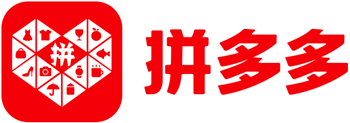China has the largest ecommerce market in the world – by far – as well as the world’s second-largest economy. Chinese online retail sales in 2020 were $1,414 billion, which is almost double the size of the next largest ecommerce market in the US.
China’s ecommerce market is responsible for 33% of total global online retail sales. Ecommerce in China now makes up 25% of total retail sales in the country, compared to 14% in the US.
The major ecommerce players in China are all domestic companies: Alibaba, JD.com and Pinduoduo. Together, their marketplaces dominate ecommerce in China with a combined market share of 89.4%.
When it comes to online retail, China is truly in a league of its own.
| Keep track of your business numbers with ease. Accounting is important, especially when you’re selling in different countries. Freshbooks helps you track expenses, customize invoices, run reports, and everything else all from one place. You can try Freshbooks for free for 30 days. Sign-up today! |

Try Freshbooks 30 days free trial Now !
The largest online marketplaces in China
| # | Type | Name | Region/Country | Product Category | China Visits/month |
|---|---|---|---|---|---|
| 1 | Taobao | China | General | 265.9M | |
| 2 | Pinduoduo | China | General | 234.8M | |
| 3 | JD.com | China | General | 160.8M | |
| 4 | Tmall | China | General | 97.7M | |
| 5 | Amazon | Global | General | 49.0M | |
| 6 | Vipshop | China | General | 11.1M | |
| 7 | Shopee | Southeast Asia | General | 3.9M | |
| 8 | Lazada | Southeast Asia | General | 2.8M | |
| 9 | Rakuten | Japan | General | 1.1M | |
| 10 | eBay | Global | General | 1.0M |
Alibaba (the owner of Taobao and Tmall), alongside JD.com and relative newcomer Pinduoduo, dominate ecommerce in China.
Average order values vary considerably for the top marketplaces. Taobao and Pinduoduo have low order values from bargain hunting and group buying, while Tmall has high order values from its sales of genuine branded products. This means that the traffic levels above do not correlate closely with sales.
When we look at the top marketplaces’ share of sales instead of traffic, Tmall has 50.1% of ecommerce sales in China, JD.com has 26.51% and Pinduoduo has 12.8%. This works out as $709 billion in GMV for Tmall, $375 billion for JD.com and $181 billion for Pinduoduo.
To put this in perspective, total online retail sales for the US in 2020 were $792 billion. So Tmall on its own is almost as large as the whole of US ecommerce combined.
Comparing China’s top online marketplace with Amazon, Tmall’s estimated GMV of $709 billion is 45% more than Amazon’s GMV (around $490 billion).
Of course, China is the most populous country in the world, with more than four times the population of the US. But it is also a much poorer country, with purchasing power per capita of only $19,000 versus $68,000 in the US. China also has much lower internet penetration at 69% compared to 96% in the US. This makes the size of the online retail market in China all the more remarkable.
Amazon appears to be a significant player in China from the traffic data above, but the 49 million monthly visits total does not show the whole story. This includes traffic from China to Amazon websites globally, not just to the local Amazon website. The monthly Chinese traffic for Amazon.cn is actually only 9.6 million. There are 32 million visits from China to Amazon.com, 3 million to Amazon.co.uk, and 2.6 million to Amazon.co.jp. All of these visits are included in the total for Amazon.
In China, mobile shopping accounts for over 80% of total online shopping, and apps are more heavily used than websites. App usage is not fully reflected in the traffic data above, so total monthly usage for each of these marketplaces will be higher than stated.
| If you need to stay organized to grow your eCommerce business. The traditional way of managing your work with emails and spreadsheets is no longer enough. You need something that can grow with your business. Monday.com is the CRM solution for online sellers that helps you get more done in less time. The customizable workflows make it easy to create and manage tasks, projects, and appointments for your team. Try monday.com free forever plan to see what it can do for your business. |

Try Monday.com for free today!
Tmall and Taobao in China

Tmall and Taobao are owned by Chinese internet conglomerate Alibaba. They are two separate marketplaces, but closely linked. Marketing promotions on Tmall will often link to Taobao, and vice versa.
Taobao
| # | Country | Visits/month | % of Total |
|---|---|---|---|
| 1 | 265.9M | 81% | |
| 2 | 15.6M | 5% | |
| 3 | 14.2M | 4% | |
| 4 | 6.3M | 2% | |
| 5 | 3.1M | 1% | |
| Others | 24.4M | 7% |
Taobao was originally founded in 2003, following the eBay model of a consumer-to-consumer marketplace. This followed eBay’s expansion into China in 2003, when they acquired China’s leading online auction company Eachnet. Taobao was created to compete with eBay in China, and quickly became the market leader. Soon after, eBay shut down its website in China.
Like eBay, Taobao has now moved away from auctions and is now largely a fixed-price marketplace for new mass-manufactured products. Although it is often still described as a C2C (consumer-to-consumer) website, Taobao sellers are typically small businesses.
Taobao does, however, have low barriers to entry for Chinese individuals and businesses who want to register as sellers on the site. It is known for selling Chinese-made consumer goods including electronics, clothes and accessories at the low end of the market. Counterfeiting has been rife on Taobao, but Alibaba has been working to reduce this. Only Chinese individuals and companies registered in China can sell on Taobao.
Tmall
| # | Country | Visits/month | % of Total |
|---|---|---|---|
| 1 | 97.7M | 86% | |
| 2 | 4.7M | 4% | |
| 3 | 3.2M | 3% | |
| 4 | 1.4M | 1% | |
| Others | 6.4M | 6% |
Tmall was launched in 2008. Originally named Taobao Mall, it was a spin-off from Taobao where only authorized businesses can trade, with a focus on genuine branded goods. While Taobao sells low-cost Chinese-made products to ordinary consumers, Tmall sells more expensive products from local and international brands to China’s rapidly expanding middle class.
Like Taobao, only Chinese businesses can sell on Tmall. Fees are high and include a large deposit to help prevent merchants who sell fake goods or have poor service levels from entering the market.
However, Tmall has a program called Tmall Global to help foreign brands sell their products on the marketplace. It does not require the seller to have a company or bank account in China, or to store their inventory within China.
With Tmall Global, products can be shipped directly from abroad or stored in bonded warehouses in free trade zones, allowing faster shipping and customs clearance. Tmall Global fees are even higher than Tmall’s standard fees, to provide more protection against counterfeit products.
Many of the world’s best known brands have stores on Tmall Global, including Uniqlo, Adidas, Nike, Costco and even Walmart and Amazon.
JD.com in China

| # | Country | Visits/month | % of Total |
|---|---|---|---|
| 1 | 160.8M | 90% | |
| 2 | 3.6M | 2% | |
| 3 | 3.4M | 2% | |
| 4 | 2.4M | 1% | |
| 5 | 2.3M | 1% | |
| 6 | 1.5M | 1% | |
| Others | 4.9M | 3% |
JD.com is often described simply as the number two ecommerce company in China, after Alibaba. This is true, but it is not accurate to compare JD.com to the number two ecommerce company in other countries, such as eBay in the US and UK. As mentioned earlier, JD.com has 26.51% of the Chinese online retail market, which is around $375 billion in annual GMV – or around 75% of Amazon’s estimated global GMV.
The company behind JD.com, originally called Jingdong, was founded in 1998, and started selling electronics as an online retailer in 2004. Over the years it expanded to other product categories and adopted a marketplace model, changing its website to JD.com in 2013. The business has a number of large outside investors including Chinese internet conglomerate Tencent and US retailer Walmart.
JD.com is known for its extensive logistics network with 28 “smart” fulfillment centers and 750 warehouses across China. Around 90% of orders are delivered the same or next day, and the company is developing fully automated warehouses and drone delivery for even faster fulfillment. Like Amazon’s FBA service, third-party sellers can use JD.com’s logistics network to fulfill their orders.
JD.com’s main marketplace is only open to businesses registered in China, but JD.com has a cross-border sales program for foreign companies called JD Worldwide. This is similar to Tmall Global, and provides access to JD.com without the need for a Chinese-registered company or bank account. There is an approval process, monthly service fee of $1,000 and deposit of $15,000. Commissions range from 2-8%, plus logistics fees if the brand is using JD.com’s fulfillment network.
Pinduoduo in China

| # | Country | Visits/month | % of Total |
|---|---|---|---|
| 1 | 234.8M | 97% | |
| 2 | 1.3M | 1% | |
| 3 | 1.0M | 0% | |
| Others | 4.4M | 2% |
Pinduoduo, founded in 2015, is an online marketplace mobile app which has grown in only four years to reach 500 million active buyers and a 12.8% share of online retail in China – approximately $181 billion in GMV. It took Amazon over 20 years to achieve the same level of sales.
Pinduoduo, or PDD, has an interactive shopping model which is ideally adapted to mobile devices and low-cost deals. Buyers browse through available deals instead of searching, and can group together into “teams” to lower the purchase price. The average order value is only $6.
The Pinduoduo app makes shopping feel like a game, finding deals, sharing coupons and impulse buying, rather than the cold transactional model typified by Amazon. Lotteries, flash sales, live video streaming and free products complete a viral marketing strategy which has been highly successful.
Pinduoduo was originally known for selling fresh food, and has expanded to a full range of products from household items and fashion to beauty and electronics. It first found popularity among bargain-hunters in China’s smaller cities and rural areas, but now has more widespread adoption. Pinduoduo has zero commission on sales, helping to build its merchant base very quickly, and making money through advertising instead.
While Pinduoduo might not seem like an attractive prospect for foreign businesses, its remarkable growth has attracted interest from high-end global brands such as Apple and Chanel. In early 2019, the company announced a new cross-border “Global Shopping” program for foreign sellers and, in May 2020, it showcased a new network of six bonded warehouses located in free trade zones across the country. Details of the program are not publicly available, but there are a number of agencies specializing in Chinese ecommerce that can help companies start selling on Pinduoduo.
Other online marketplaces in China

Six other online marketplaces feature in our list above, but only two are really relevant to online retailers and brand owners outside China, who want to sell to Chinese consumers: Amazon and Vipshop.
A third marketplace, Kaola, didn’t quite make our list this year because it now has fewer than one million monthly visits from China (693,000) but it is worth a mention as it is specifically focused on cross-border ecommerce.
Amazon needs no introduction to businesses in North America or Europe, where it is the clear market leader. But in China, Amazon has not been successful. Amazon bought Chinese online shopping business Joyo.com in 2004, and renamed it Amazon China. After many years of losing market share, Amazon.cn closed to Chinese sellers, but has continued to offer products from merchants worldwide. This provides an easy way for existing Amazon sellers to reach Chinese buyers.
As mentioned above, Amazon’s website in China has only 9.6 million monthly visitors. There are 39.4 million visits per month from Chinese consumers to Amazon’s other websites around the world (the majority to Amazon.com) but visits to Amazon.cn itself are relatively low.
Vipshop is the fourth largest online marketplace in China, with a market share of 1.88%. Vipshop specializes in flash sales of branded products in the fashion, beauty and home product categories. It has had a dedicated “VIP International” category on its website since 2014 and an established cross-border selling program to help foreign brands sell to Chinese consumers.
Kaola was started in 2015 by Chinese internet company NetEase, and is dedicated to cross-border imports of foreign brands. It originally offered products from Australian sellers, but has since expanded to brands worldwide. Although Kaola has a relatively small share of overall Chinese ecommerce, it is estimated to have 24.5% of the cross-border ecommerce market, behind only Tmall Global.
In September 2019, Alibaba bought Kaola from NetEase to become the overall market leader in cross-border online retail in China. Kaola remains an independent website, but may be integrated into Tmall Global in the future.
About the data
This article covers the major online marketplaces in China (either pure-play marketplaces or retailers with a third-party marketplace) based on total monthly visits from within China, using data from SimilarWeb. A global list of online marketplaces, based on the same data, is available in The World’s Top Online Marketplaces.
We have excluded online retailers whose marketplace forms a very small part of their overall business, as well as marketplaces with a consumer-to-consumer model, and marketplaces with a very narrow product niche.
Hi, aside from Amazon and Wish, which marketplaces HQ'd outside of China have the highest amount of Chinese-based sellers?
eBay is the obvious one that comes to mind.